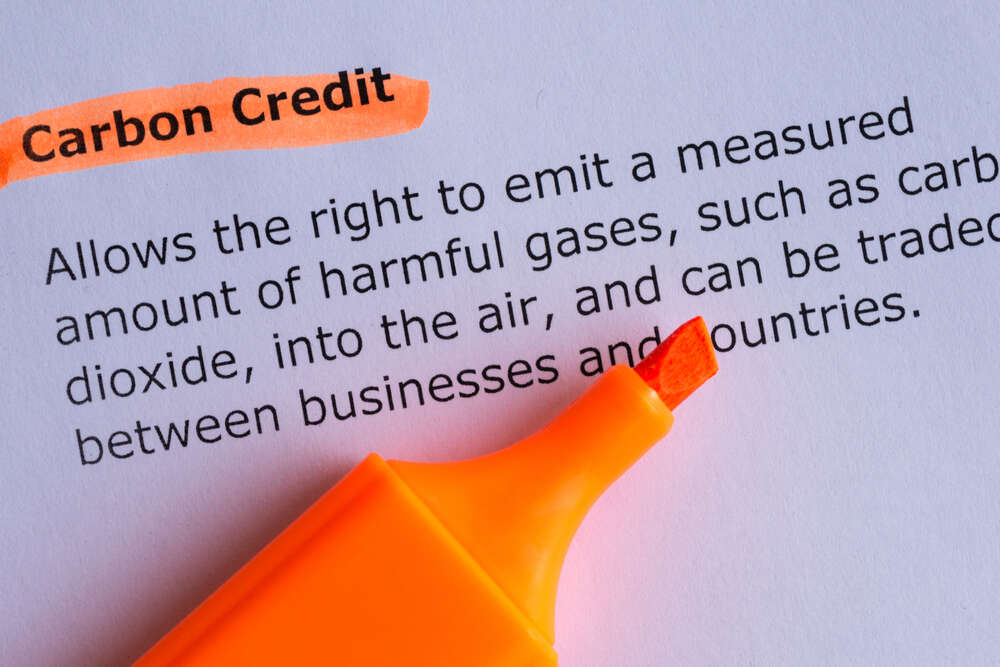

- Voluntary carbon markets face a credibility test after the majority of rainforest offset credits approved by leading carbon standard Verra were worthless.
- Zimbabwe has released a national carbon credit framework, setting guidelines for compliance and revenue sharing.
- Ambiguity around regulatory requirements and a lack of standardised reporting frameworks hinder market growth.
The $2bn voluntary carbon markets have been under considerable scrutiny this year. They have faced what Aurelia Britsch, head of climate risk at Sustainable Fitch in Singapore, has called a “credibility test”.
It has felt a lot like the Wild West. In January, an investigation by Britain’s the Guardian, German weekly Die Zeit and non-profit investigative journalism organisation SourceMaterial, found that more than 90% of the rainforest offset credits approved by Verra, the world’s leading carbon standard for the voluntary offsets market, were largely worthless.
Voluntary carbon markets differ from regulated equivalents as they are driven by individual organisations – participation and compliance are not mandated by government regulations.
Some governments are stepping up to support voluntary markets. In mid-May, the government of Zimbabwe released a national carbon credit framework outlining guidance on the compliance and voluntary carbon markets in the country – a hybrid model, where participation is not mandatory but the standards are set by government. Each credit is equal to one metric tonne of carbon dioxide equivalent.
Earlier this year President Emmerson Mnangagwa said that process of carbon credits in the country needed to be revised to make sure that the government gets “a fair share of the proceeds from the trade”.
Under its terms, and from August, the Zimbabwean government will take 50% of the revenue generated from carbon credit projects, with foreign and local investors entitled to 30% and 20%, respectively. More to the point, all carbon credit project agreements in the country will now have to pass through the attorney general’s office.
Although the planned changes in Zimbabwe are particularly stringent, the country is not alone in changing its regulations. Others to look out for include, Kenya, Indonesia and China.
As Britsch noted in another report in mid-June: “These developments…may affect carbon credit supply and prices and the users relying on voluntary carbon markets to meet part of their decarbonisation strategies”.
Erosion of trust
Governments have stepped in because the sense is that corporations have not quite found their way.
The credibility issue remains significant. “It is so easy to erode trust,” admitted Mikkel Larsen, chief executive of Climate Impact X, a global marketplace for carbon credits. He was speaking at the inaugural GenZero Climate Summit 2023 in Singapore in June.
The difficulty, as Vaibhav Dua, leader of McKinsey’s Sustainability Insights team in Asia, pointed out is that the market remains “nascent”. When trading mostly happens over-the-counter, that gives scope for “a lot of information ambiguity”.
What the panel agreed on was that the market needed clarity. “We need the right incentives and they come from the integration of compliance in the voluntary market,” said Larsen.
The question that clients keep asking, Dua said, is whether credits that they have bought count towards regulatory requirements. Many countries have yet to make that clear.
“As long as there is this ambiguity there is always a reluctance from the buyer side,” he said.
The direction of travel does not seem in doubt, but how long the journey will take remains unknown.
“It’s clear that nature-based solutions and voluntary carbon markets will continue to grow. The question is will it take five, ten or 15 years for there to be clarity and scale that is meaningful to financial institutions,” concluded Jack Roswell, chief executive of Perennial, a verification platform for soil-based carbon removal.
Carbon credits: need for standardisation
But while many companies are trying to work out how to use carbon credits both efficiently and properly, there is also scope for companies to use them to their advantage.
This was highlighted in a report at the beginning of June from S&P which looked at 25 of the highest-revenue oil and gas companies, with combined revenue of $3.8trn trillion and aggregate capital expenditure of $279bn in their latest fiscal year.
Among the oil and gas companies in the sample, 64% already use the voluntary carbon credit market, and 84% suggest this will be part of their future strategy [see chart].
At the moment, the effect is negligible.
Current total purchases amount to 3% of the companies’ Scope 1 and 2 emissions last year and only five companies disclosed plans to limit the use of carbon credits to offset on average 10% of total greenhouse gas emissions by 2030.
There are a couple of problems. Authors Terry Ellis, and Simon Redmond point out that there is “an emphasis on coupling credits to sold fuel”. This includes, for example, marketing the fuel as carbon neutral or net zero to emphasise its relevance for Scope 3 emissions, as opposed to balancing Scope 1 and 2 emissions.
More to the point, they highlight that some oil and gas companies treat trading carbon credits as a business line, rather than as a way to support their own decarbonisation claims.
“From our sample, 40% of companies have disclosed that carbon credits are part of their low carbon solutions for customers,” they write.
Much like the GenZero conference, S&P highlights the lack of a standardised reporting framework. It is that rather than the voluntary carbon market itself that is hindering developments.
A regulated voluntary carbon market is an important tool to bring us back on our 1.5°C pathway noted Karl Schmedders, professor of finance at IMD in Lausanne, in a recent article.
“Just because the market has not worked as transparently or efficiently as it could have done, there is no reason to reject the idea of it altogether,” he said.
[Read more: Oil majors are burying sustainability like it’s out of fashion]





